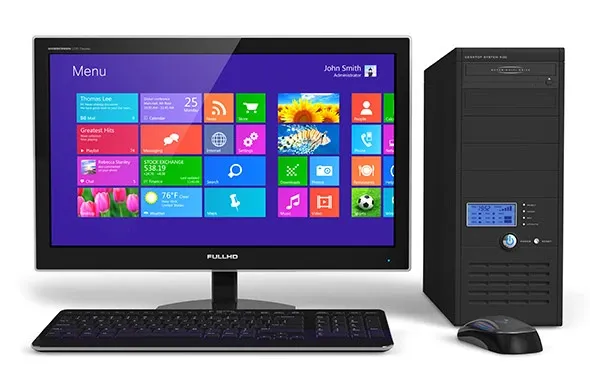Travel eSIM Users to Grow 440 Percent Over the Next 5 Years
According to a new study from Juniper Research, the global number of travel eSIM users will grow from 40 million in 2024 to over 215 million by 2028.

Worldwide shipments of traditional PCs (desktop, notebook, workstation) totaled 60.3 million units in the first quarter of 2017 (1Q17), posting year-over-year growth of 0.6%, according to the IDC Worldwide Quarterly Personal Computing Device Tracker preliminary results. The previous forecast had expected shipments to decline 1.8% in the quarter. And, while the 0.6% growth was arguably flat, the result nonetheless represented the first foray back into positive territory since Q1 2012, when many users still considered PCs their first computing device.
Like the second half of 2016, some of the same forces continue to shape the market. Tight supplies of key components such as NAND and DRAM are affecting inventory dynamics and led a number of vendors to boost shipments to lock in supply ahead of further cost increases. In addition, the market continued along a path of stabilization that began in the latter half of last year, especially as more commercial projects moved out of pilot mode and began shipments in earnest.
From a geographic perspective, mature markets again outdid emerging markets. All regions exceeded forecast except for the United States, although the U.S. posted just a slight decline. Despite the generally positive trends, Asia/Pacific (excluding Japan)(APeJ) and Latin America continued to see year-
The traditional PC market declined slightly year over year in United States as notebook PCs saw sales slumping this quarter. After a strong holiday season at the end of 2016, the consumer PC market witnessed a comparative slow down this quarter with lower sell-out while the commercial PC market came out strong mostly backed by growth of Chromebooks. Overall, total PC shipments for 1Q17 totaled 13.3 million units.
The EMEA traditional PC market stabilized for the second consecutive quarter, thanks to strong notebook performance. The combination of backlogs, fulfillment from previous quarters, and solid mobility demand in enterprises boosted overall notebook shipments in 1Q17. However, desktops continued to erode, in line with expectations.
The APeJ market remained soft. Weakness in the consumer market persisted, as demand and shipments in many countries were impacted by price increases fueled by tight component supply. The pricing pressure was felt in the Chinese consumer market despite continuing strong demand for gaming and ultraslim notebooks. The commercial market in China performed better, driven by demand in the public sector. The education segment drove shipments in the commercial space, with several projects delivered throughout the region. India saw a rebound after the demonetization severely affected the market in the previous quarter while the back-to-school season allowed for healthy volumes in Korea.
The traditional PC market in Japan has recovered with healthy macroeconomics and an emerging PC refreshment cycle, especially in commercial, leading to the first year-on-year growth since Q2 2014.
HP took back the top spot for the first time since Q1 2013 after several quarters inching closer to Lenovo. The vendor has focused on building out a deep portfolio and saw a strong quarter in notebooks across all regions. Lenovo held the second position with relative modest growth of 1.7% globally. Lenovo had its first decline in the U.S. since Q3 2009, down 4.2% year over year.
Dell captured the third position, grew 6.2% year over year, and continued its positive growth in every region with strong notebook volume. Dell posted growth in all markets, although the U.S. slowed relative to others. Apple kept the fourth position and grew 4.1% year over year. Acer regained the fifth position, growing 2.9% in part due to better comparisons against a challenging 1Q16.
Top 5 Vendors, Shipments, First Quarter 2017 (Preliminary) | |||||
Vendor | 1Q17 Shipments | 1Q17 Market Share | 1Q16 Shipments | 1Q16 Market Share | 1Q17/1Q16 Growth |
1. HP Inc | 13,143 | 21.8% | 11,621 | 19.4% | 13.1% |
2. Lenovo | 12,322 | 20.4% | 12,121 | 20.2% | 1.7% |
3. Dell | 9,573 | 15.9% | 9,017 | 15.0% | 6.2% |
4. Apple | 4,201 | 7.0% | 4,036 | 6.7% | 4.1% |
5. Acer Group | 4,121 | 6.8% | 4,006 | 6.7% | 2.9% |
Others | 16,967 | 28.1% | 19,140 | 31.9% | -11.4% |
Total | 60,328 | 100.0% | 59,942 | 100.0% | 0.6% |
Source: IDC | |||||